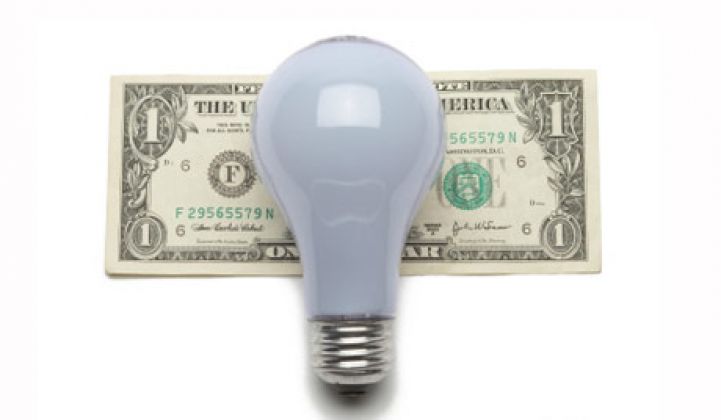JPMorgan Chase personnel have a lot of conversations about financing energy efficiency products. Despite the talk, “we don’t have a whole lot to show for it,” Granville Martin, executive director of environmental affairs at JPMorgan Chase said at the Advanced Energy Conference in New York City.
Despite being the largest tax equity investor in wind and solar in the U.S., Martin said that energy efficiency, in any flavor, just doesn’t seem to work for JPMorgan Chase at this time.
Martin spoke on a panel about New York state’s forthcoming $1 billion green bank, and what role it should play to bring large investors into the energy efficiency fold. “There’s just a lack of organic demand,” said Martin, who suggested the green bank could act as an aggregator of demand to let large banks understand the demand better and then market the opportunity, especially to existing clients.
The lack of education and demand surrounding energy efficiency is one problem, but so is the lack of data and the resulting difficulty in securitizing the loans. “We’re trying to sell Kool-Aid, but people won’t drink the Kool-Aid because there’s insufficient information to make decisions on it,” said Jeff Pitkin of the New York State Energy Research and Development Authority (NYSERDA), which issues tens of millions of dollars in energy efficiency loans.
NYSERDA wants to package up energy efficiency loans the same way Mercedes Benz packages leases and sell them to institutional investors. But a lack of prior investment history made it difficult to get securitization and the AAA rating to be an attractive product to institutional investors.
The latest fund from NYSERDA will be a $30 million “resiliency retrofit fund,” which is getting final approval. The fund will provide credit enhancements to incentivize lending organizations to get involved. The money will go to areas affected by Superstorm Sandy in New York and will fund distributed generation, such as solar or combined heat and power, and also energy efficiency upgrades.
The panelists noted that property-assessed clean energy programs (PACE) could help to build the scale needed to bring in large banks, like JPMorgan Chase, but it’s still too early to tell. Martin said that they had an application from California’s statewide PACE program but ultimately didn’t consent. One problem was a lack of clarity in transaction costs. “With respect to energy efficiency,” said Martin, “the uncertainty of that market is a fundamental stumbling block.”
As the program expands, however, Martin said the bank would be interested in seeing who is taking part, and that could incentivize banks to get involved. Although banks haven’t found the right place to jump in head-first into energy efficiency financing, the bubbles of interest will turn to a boil, and maybe sooner than later.
“We think ultimately this will be a great market,” said Martin.



